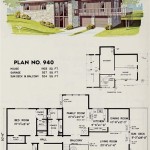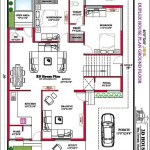Essential Aspects of the Best Home Internet Plans in the USA
In today's digital age, having a reliable and high-speed internet connection at home is no longer a luxury but a necessity. With a wide range of home internet plans available in the USA, choosing the right one can be a daunting task. To make an informed decision, it's crucial to consider the following essential aspects:
### 1. Speed and ReliabilityThe speed of your internet connection is measured in megabits per second (Mbps). The higher the speed, the faster you can download files, stream videos, and play online games. Reliability refers to how consistently your internet connection performs. Look for plans that offer both high speeds and reliable connections to ensure a seamless online experience.
### 2. Data Caps and UsageSome internet plans have data caps, which limit the amount of data you can use within a billing cycle. If you exceed the cap, you may incur additional charges. For heavy internet users, choosing a plan with unlimited data is recommended. Additionally, consider your average monthly data consumption to avoid exceeding data limits.
### 3. Contract Length and FeesMany internet providers offer contracts for specific durations, such as one year or two years. During this period, you may be locked into a certain monthly rate and potentially face termination fees if you cancel the contract early. Carefully review the contract terms and associated fees before signing up.
### 4. Equipment and Installation CostsSome internet providers provide modems and routers as part of their plans, while others require customers to purchase their own equipment. Check the details of each plan to understand the equipment included and any additional costs for installation or activation.
### 5. Customer ServiceIn case of technical difficulties or billing issues, having access to responsive and reliable customer service is essential. Look for providers with good customer satisfaction ratings and multiple channels for customer support, such as phone, email, and live chat.
### 6. Availability in Your AreaNot all internet plans are available in every location. Before signing up, check if the plan you're interested in is available at your address. You can use online tools or contact the provider directly to confirm coverage in your area.
### 7. Bundle OptionsSome providers offer bundle packages that include internet, TV, and phone services. These bundles can often provide cost savings compared to purchasing each service separately. If you're interested in multiple services, consider exploring bundle options.
### 8. Promotions and DiscountsMany internet providers offer promotions and discounts for new customers or for signing up for multi-year contracts. Be sure to inquire about any available deals and compare the total cost of each plan over the long term.
### ConclusionSelecting the best home internet plan in the USA requires careful consideration of your specific needs and budget. By evaluating the essential aspects discussed above, you can make an informed decision that will provide you with the reliable and high-speed internet connection you require.

Verizon Launches Its New 5g Home Internet Plans Starting At 50 Per Month Phandroid

5 Best Fixed Wireless Internet Providers The Ultimate Breakdown Samantha Brandon

Best Fixed Wireless Lte Internet In Usa

Get Internet The White House

Home Internet Plans Gemstelecom

Reliable 5g Home Internet Service T Mobile

Xfinity Internet Plans S And Deals January 2024

Best Wireless Home Internet 844 223 7265

Stop The Cap Verizon Will Cease Ing Standalone Dsl Service May 6th With Only Please

Airtel Xstream Fiber New Plans With Unlimited Data Starting From Rs 499 91mobiles Com








